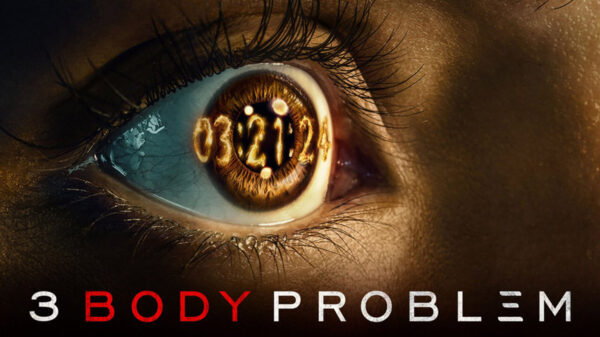If you’re one of the talented few who have completed Konami’s 1986 gothic horror action-adventure game Castlevania then you’ve seen the game’s unusual closing credits. Instead of a list of the names of people who worked on the game, it is instead an homage to those involved in classic horror cinema. Among the names are the actor Christopher Lee (written as Christopher Bee) but also the much more obscure name of Terrence Fisher – director of British horror film company Hammer’s 1958 Dracula.
Bram Stoker’s 1897 popular novel has been adapted in countless ways, and the vampire has appeared on screen in about 400 different incarnations from all over the world. The Castlevania video game series is deeply influenced by the vampire’s filmic outings and across the 30 or so games you can find references littered throughout.
This reverence for the monster’s cinematic history is because, as one of the game’s creators Hitoshi Akamatsu has said, the team wanted players to feel like they were in a classic horror film. It is no wonder then that the game has been adapted into two series by Netflix: Castlevania and the newly released Castlevania: Nocturne.
Hammer’s big influence
One of the most recognisable filmic iterations of Stoker’s monster is Bela Lugosi’s iconic 1931 portrayal. Lugosi’s Hungarian accent and slow, steady delivery combined with smaller details like slicked-back hair and a distinct medal has become one of the most caricatured versions of the count, influencing films like the animated franchise Hotel Transylvania and even Sesame Street’s math-loving The Count.
While, for many, this is the definitive Dracula film, in Japan, it’s seemingly Hammer’s 1958 production starring Christopher Lee.
When Hammer produced its Dracula film, it was transformational because it challenged audience expectations of the characters. The lawyer Jonathan Harker, for example, is not an unwitting victim and instead is a vampire hunter who arrives at Dracula’s castle looking to slay him.
These differences were made because Hammer had to be really clear that they were not drawing on Lugosi’s portrayal, so as not to intrude on Universal Studios’ copyright. Instead, they breathed new life into Stoker’s original novel, creating a frightening new version of the character.
Hammer’s Dracula’s popularity inspired the creators of Castlevania (known in Japan as Akumajō Dracula) for the first game released in 1986. Hammer holds this influence in Japan due to timing. As the film Masaya Shimokusu has noted, Dracula arrived later in Japan as it wasn’t translated until after the second world war. This meant audiences missed out on Lugosi and instead writers and creatives were inspired by the many repeats of Lee’s Dracula and the larger series, which features nine films, on television throughout the 70s and early 80s.
The game and its many sequels owe a lot to these early British horror films.
Its influence on Castlevania can be seen in the game’s initial narrative, which saw a man turning up at Dracula’s castle to slay him. There are, of course, differences. In the game, it’s not Jonathan Harker but Simon Belmont, a descendant of a legendary vampire hunter, who has to navigate the castle using well-timed jumps and attacks to progress through different levels, defeating hordes of monsters. Finally, Belmont must confront Dracula himself in a form that conveys all of Lee’s ferocity.
Reinventing the game
Just as Hammer did across its nine films, Konami continued to reinvent its series to meet audience expectations. In 1997, the Playstation game Castlevania: Symphony of the Night brought the series to new heights (1997). The title starred Dracula’s son, Alucard – a reference to the character of the same name in the 1943 American film, Son of Dracula.
Reflecting changing conventions, Alucard was refined and pale on the game’s distinct cover. This was more in keeping with the image of vampires in 90s movies.
Dracula underwent a similar transformation to his son, losing some of his resemblance to Lee. Earlier appearances saw him as a monstrous, motiveless demon, but here he becomes a tragic, romantic figure who is mourning the death of his wife – echoing the Dracula film of the time, 1992’s Bram Stoker’s Dracula.
Symphony of the Night was so successful its influence can be seen across a vast range of games. Not only is this entry highly critically regarded and considered one of the “best games ever released“, but popularised the “Metroidvania” format. This meant players explored vast areas as they wanted, unlocking powers as they went. The Metroidvania genre has grown in popularity in recent years, especially with smaller studios, such as Team Cherry’s universally acclaimed Hollow Knight.
Both TV series draw heavily from Symphony of the Night and their versions of Dracula and his son Alucard. The original Castlevania series ran for four seasons from 2017 to 2021 and garnered critical acclaim. It begins with Dracula’s wife being burned at the stake and the vampire vowing that the people of Wallachia (a real place in Romania) will pay with their lives. The series follows Trevor Belmont (the protagonist in Castlevania III: Dracula’s Curse) as he battles Dracula’s demonic forces with the help of Alucard.
This new spin-off series is set hundreds of years after the events of the first and is also gathering praise. It follows the young vampire hunter Richter Belmont (who made his debut in the game Castlevania: Rondo of Blood) and his adoptive sister Maria Renard as they try to stop an apocalyptic vampire plot during the French Revolution. Alucard returned late in series one and is set to play a bigger role in series two.
There hasn’t been a new game since 2014’s Castlevania: Lords of Shadow 2. These two streaming series adapt some of the best story lines from the games’ back catalogue and will hopefully draw people back to playing them – and maybe even revisiting the classic horror films that first inspired them.
Written by Matthew Crofts, Researcher in Gothic Literature, University of Hull
This article is republished from The Conversation under a Creative Commons license. Read the original article.
![]()
5 Ways to Support HipHopCanada:
- Submit Your Music
- Follow Canadian Fresh (HipHopCanada’s Spotify Playlist)
- Follow us on Instagram
- Follow us on X (Twitter)
- Like us on Facebook



















































